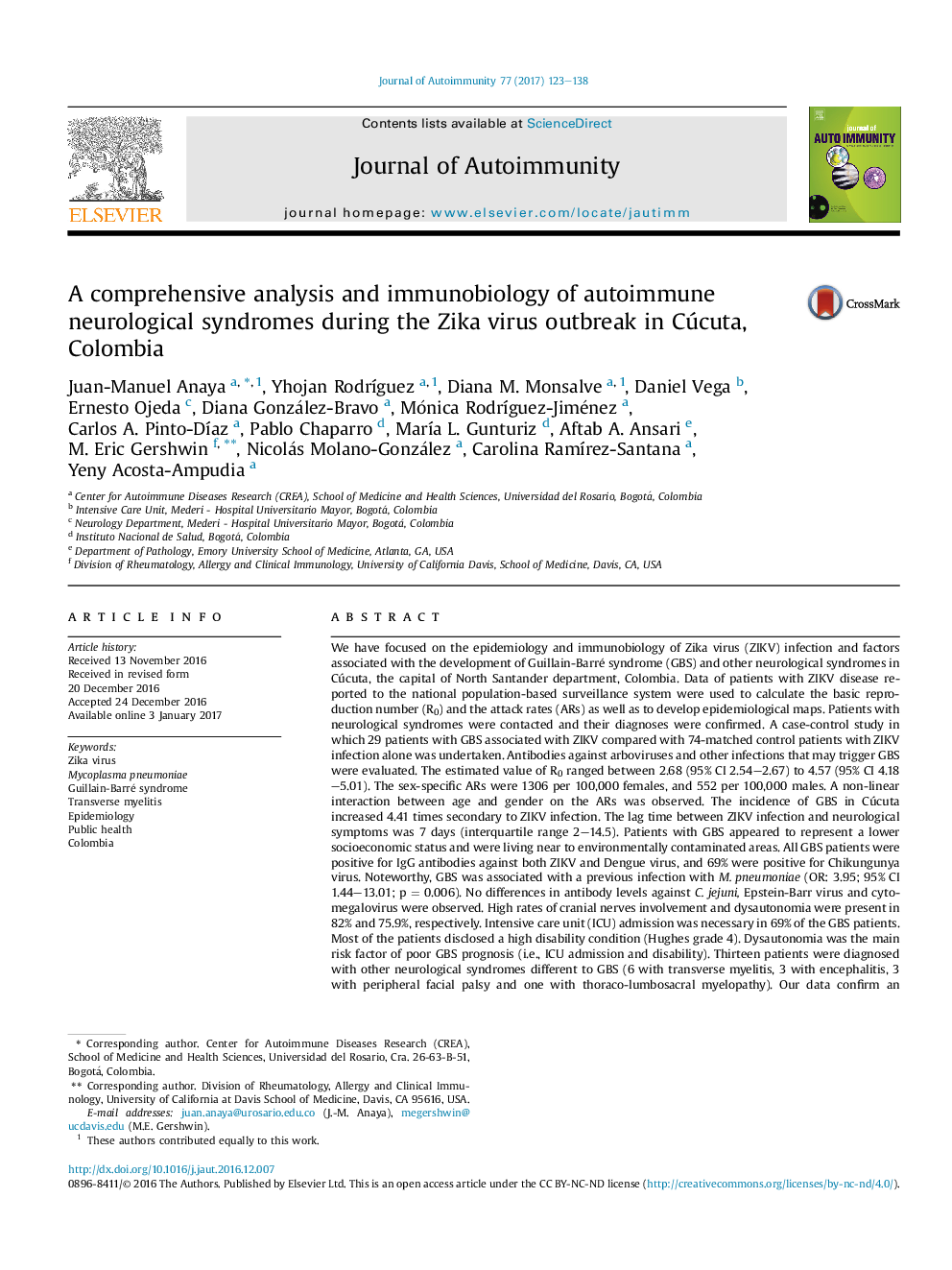| Article ID | Journal | Published Year | Pages | File Type |
|---|---|---|---|---|
| 5667924 | Journal of Autoimmunity | 2017 | 16 Pages |
â¢This patient-centered research confirms an increased transmission of ZIKV in Cúcuta.â¢There was a significant increase of severe GBS and other neurological syndromes during the ZIKV outbreak.â¢Low socioeconomic status and a high load of previous infection are associated with GBS development in people infected with ZIKV.â¢More aggressive and efficient control systems for vector-borne viral diseases affecting humans need to be created.
We have focused on the epidemiology and immunobiology of Zika virus (ZIKV) infection and factors associated with the development of Guillain-Barré syndrome (GBS) and other neurological syndromes in Cúcuta, the capital of North Santander department, Colombia. Data of patients with ZIKV disease reported to the national population-based surveillance system were used to calculate the basic reproduction number (R0) and the attack rates (ARs) as well as to develop epidemiological maps. Patients with neurological syndromes were contacted and their diagnoses were confirmed. A case-control study in which 29 patients with GBS associated with ZIKV compared with 74-matched control patients with ZIKV infection alone was undertaken. Antibodies against arboviruses and other infections that may trigger GBS were evaluated. The estimated value of R0 ranged between 2.68 (95% CI 2.54-2.67) to 4.57 (95% CI 4.18-5.01). The sex-specific ARs were 1306 per 100,000 females, and 552 per 100,000 males. A non-linear interaction between age and gender on the ARs was observed. The incidence of GBS in Cúcuta increased 4.41 times secondary to ZIKV infection. The lag time between ZIKV infection and neurological symptoms was 7 days (interquartile range 2-14.5). Patients with GBS appeared to represent a lower socioeconomic status and were living near to environmentally contaminated areas. All GBS patients were positive for IgG antibodies against both ZIKV and Dengue virus, and 69% were positive for Chikungunya virus. Noteworthy, GBS was associated with a previous infection with M. pneumoniae (OR: 3.95; 95% CI 1.44-13.01; p = 0.006). No differences in antibody levels against C. jejuni, Epstein-Barr virus and cytomegalovirus were observed. High rates of cranial nerves involvement and dysautonomia were present in 82% and 75.9%, respectively. Intensive care unit (ICU) admission was necessary in 69% of the GBS patients. Most of the patients disclosed a high disability condition (Hughes grade 4). Dysautonomia was the main risk factor of poor GBS prognosis (i.e., ICU admission and disability). Thirteen patients were diagnosed with other neurological syndromes different to GBS (6 with transverse myelitis, 3 with encephalitis, 3 with peripheral facial palsy and one with thoraco-lumbosacral myelopathy). Our data confirm an increased transmission of ZIKV in Cúcuta, and provide support to the view that severe neurological syndromes are related to ZIKV disease. The complex ways by which previous infections and socioeconomic status interact to increase the risk of GBS in people infected by ZIKV should be further investigated.
